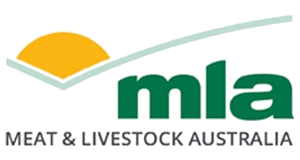A quantitative risk assessment of microbial emissions from abattoirs
| Project start date: | 01 January 2001 |
| Project end date: | 01 May 2003 |
| Publication date: | 01 May 2003 |
| Project status: | Completed |
| Livestock species: | Sheep, Goat, Lamb, Grassfed cattle, Grainfed cattle |
| Relevant regions: | National |
|
Download Report
(1 MB)
|
|
Summary
A quantitative microbiological risk assessment model was produced to estimate the risk of human illness from exposure to microorganisms released to the environment from abattoirs.
The risk assessment model tracks pathogen transport through the air, water and solid waste streams associated with the critical stages in a primary meat processing operation.
Six pathogens of greatest interest to the Australian meat processing industry and with potential to pose a risk to human health were identified and their routes of transmission to the environment established. The selected pathogens wereCampylobacter jejuniCoxiella burnetiiEscherichia coli - certain serotypesSalmonella spp.Cryptosporidium parvumListeria monocytogenes
Quantitative risk assessments using Monte Carlo simulation were carried out for each pathogen to estimate the human health risks from five exposure pathways relating to airborne and waterborne exposure.
Although there is considerable uncertainty associated with all of the risk estimates, the pathogens can be ranked with reasonable confidence.
Site-specific characteristics of individual abattoirs will determine the actual magnitude of risk.
For airborne exposure pathways, Coxiella burnetii appears to be of greatest concern.
It is unclear whether the other pathogens pose any risk at all when inhaled. For waterborne pathways, Cryptosporidium parvum is ranked highest followed by Campylobacter jejuni, with the remaining pathogens several orders of magnitude lower.
The quantitative risk assessment model provides an objective tool for the meat and livestock industry to assess the public health risks from abattoir emissions and direct future research activities.
This page was last updated on 25/03/2014
More information
| Project manager: | Ian Jenson |
| Primary researcher: | Bureau of Rural Sciences |


